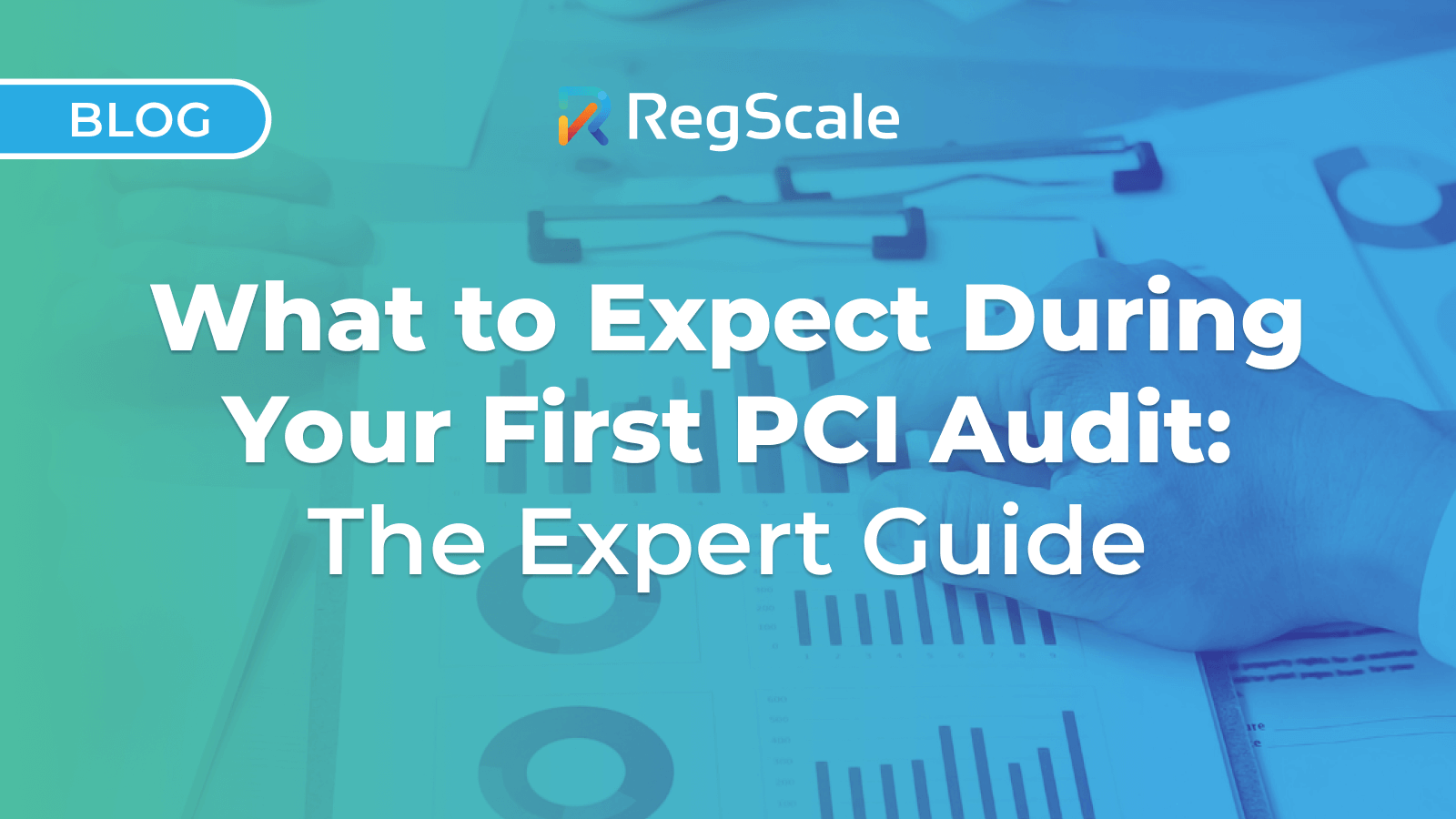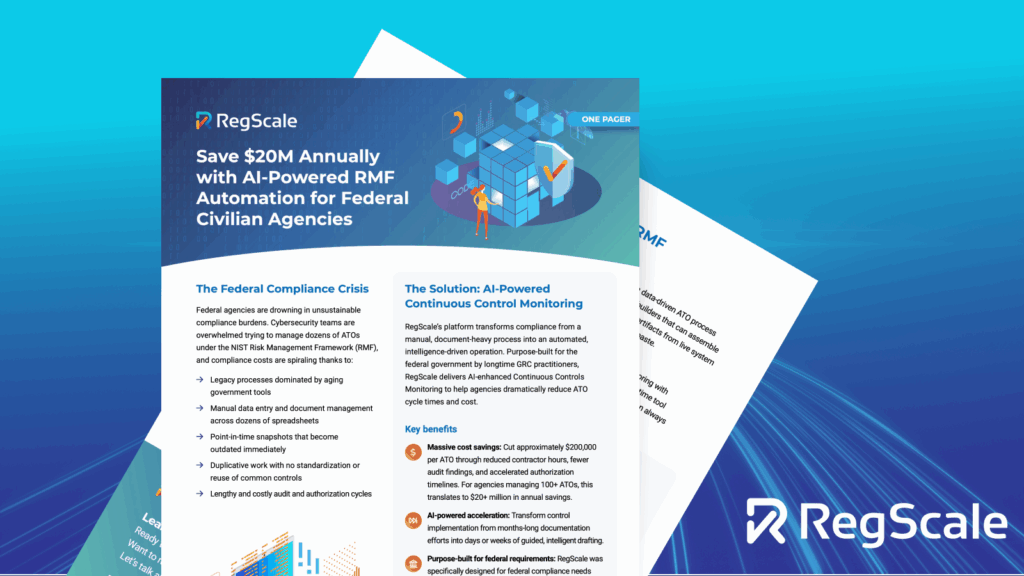What to Expect During Your First PCI Audit: The Expert Guide

A customer taps their credit card at your point of sale terminal. In an instant, their card data is going to embark on a carefully orchestrated journey through a number of digital safeguards. Encryption algorithms will scramble the 16-digit number, firewalls will guard network boundaries, and monitoring systems will vigilantly scan for anomalies.
Behind this seamless transaction lies the Payment Card Industry Data Security Standard (PCI DSS), a comprehensive security framework ensuring that every organization handling credit card payments maintains this invisible shield around sensitive cardholder data. Also in place? A robust system of audits to ensure that businesses are upholding PCI DSS standards.
For businesses facing their first PCI audit, this intricate security landscape can seem daunting. Whether you’re a small retailer processing occasional card payments or an enterprise handling millions of transactions annually, understanding what to expect during your PCI audit is crucial for success.
Today, we’ll walk you through everything you need to know about PCI DSS compliance requirements, audit types, and practical preparation strategies to help you navigate the audit process with confidence.
What is PCI DSS compliance?
First, let’s unmask the acronym. The Payment Card Industry Data Security Standard is a set of security requirements established by the PCI Security Standards Council to protect cardholder data. Officially introduced in 2004, this comprehensive framework was designed to ensure that all businesses that process, store, or transmit credit card information are maintaining a secure environment.
PCI DSS emerged out of a real need around the year 2000, when online merchants in the US were losing more than 3% of total sales due to stolen or fraudulent credit card transactions. To address these payment security issues, the PCI DSS framework was created collaboratively by five major credit card brands: Visa, Mastercard, American Express, JCB International, and Discover.
Two decades later, the standard has evolved into the PCI DSS 4.0 we know today. PCI DSS compliance now encompasses twelve fundamental requirements organized into six main principles:
- Building and maintaining secure networks. This includes installing and properly configuring firewalls and avoiding vendor-supplied default security parameters.
- Protecting cardholder data. Organizations must properly safeguard stored cardholder information and encrypt transmission of this sensitive data across open networks.
- Maintaining a vulnerability management program. This requires regular updates to anti-virus software and secure development practices for systems and applications.
- Implementing strong access control measures. Access to cardholder data must be restricted on a need-to-know basis, with unique IDs assigned to each person with computer access.
- Regularly monitoring and testing networks. All access to network resources and cardholder data must be tracked, with security systems and compliance processes tested regularly.
- Maintaining an information security policy. Organizations must establish, document, and implement security policies that address information security across all operations.
PCI compliance is not a one-time achievement but rather an ongoing process that requires continuous monitoring, regular assessments, and timely updates to security controls as threats and technologies evolve. For many businesses, maintaining PCI DSS compliance will represent not just a regulatory requirement but also a crucial component of their overall cybersecurity posture and customer trust framework.
Who needs to prepare for a PCI DSS audit?
Do customers hand you their credit cards? Do they pay for goods or services on your website? If so, your business likely needs to comply with PCI DSS.
Essentially, any organization that processes, stores, or transmits credit card information needs to prepare themselves for PCI DSS audits. This includes small merchants, large corporations, service providers of all sizes, payment processors, and banks and financial institutions. While the exact audit requirements will vary based on transaction volume and processing methods, PCI compliance is universal for businesses handling card payments.
The PCI Security Standards Council categorizes businesses into four merchant levels primarily based on transaction volume.
- Level 1: Merchants processing over 6 million card transactions annually across all channels. These organizations face the most rigorous audit requirements, including mandatory annual onsite audits by a Qualified Security Assessor (QSA) and quarterly network scans by an Approved Scanning Vendor (ASV).
- Level 2: Merchants processing 1 to 6 million card transactions across all channels annually. These businesses typically complete an annual Self-Assessment Questionnaire (SAQ) and undergo quarterly network scans.
- Level 3: Merchants processing 20,000 to 1 million e-commerce transactions annually. Like Level 2, requirements for this level include completing an annual SAQ and quarterly network scans.
- Level 4: All other merchants. While they face the same basic requirements and annual audits as Level 3 merchants, validation procedures may be less stringent.
The consequences of non-compliance can be severe, ranging from financial penalties imposed by card brands to increased transaction fees, reputational damage, and — in worst-case scenarios involving data breaches — significant legal and remediation costs.
Some PCI DSS caveats
It’s important to note that PCI compliance extends to the entire cardholder data environment (CDE) — i.e. anything included in or connected to the network containing cardholder data. This means that even departments or systems not directly handling card transactions may fall within the scope of a PCI audit if they could potentially impact cardholder security.
Organizations should also note that while card brands like Visa, Mastercard, and American Express establish and enforce compliance requirements, it’s the acquiring banks that typically determine the specific validation requirements for their merchants. These requirements might sometimes exceed the minimum standards set by the card brands, especially for businesses with higher risk profiles or previous security incidents.
Even if your business outsources payment processing to reduce your compliance burden, you still maintain responsibility for ensuring that your service providers are PCI compliant. This underscores the importance of thorough vendor risk assessments when you’re selecting your payment processing partners.
What to expect and how to prepare for your PCI audit
Preparing for your first PCI compliance audit can seem overwhelming, but understanding the process and taking proactive steps can make it more manageable. Here’s what to expect and how to properly prepare.
Define your PCI scope
The first critical step is accurately defining your cardholder data environment (CDE). This means identifying all systems, networks, and processes that store, process, or transmit cardholder data, plus any connected systems that could impact their security. To prepare, you’ll want to:
- Document your payment flows in detail
- Identify all entry and exit points for cardholder data
- Implement proper network segmentation and conduct segmentation testing to verify effectiveness
- Consider implementing point-to-point encryption or tokenization
Gather your documentation
PCI audits require extensive documentation. You’ll likely need to prepare information on both proper implementation and consistent operation of the required controls. That includes:
- Information security policies and procedures
- Evidence of security controls implementation
- System configuration standards
- Vulnerability testing processes
- Risk management processes
- Access control records
- Monitoring and testing results
- Incident response plans
- Employee training records
Prepare for the onsite audit
Next, you’ll want to get ready for the Qualified Security Assessor visit. The QSA is a senior professional certified by the PCI SSC to validate your compliance, and they will likely have been partnering with your organization throughout the entire audit process. The QSA will typically conduct:
- Documentation review of policies, procedures, and evidence
- Interviews with staff responsible for security controls
- Direct observations of security processes
- Technical testing, including penetration testing, vulnerability scans, access control verification, and more
Address compliance gaps
Following the onsite audit, your organization will receive a Report on Compliance (RoC) with detailed analysis, including any compliance gaps uncovered by the auditor. To address the findings of this report, you’ll want to:
- Prioritize gaps based on risk and complexity
- Develop realistic timelines for addressing findings
- Allocate necessary resources for remediation
- Implement new controls where appropriate
PCI best practices
A PCI audit will likely be an annual undertaking for your business. It’s common to run into problems, from incomplete documentation to tedious evidence collection processes to legacy systems with inherent security limitations.
However, those problems don’t have to be insurmountable. Here are a few tips to turn your PCI compliance program into a well-oiled machine:
- Develop comprehensive documentation addressing all twelve PCI DSS requirements, tailored to your specific environment.
- Implement processes to consistently capture evidence of controls working properly (logs, reports, test results).
- Build a cross-functional team with expert stakeholders from IT, security, operations, legal, and business.
- Train employees on security practices and their role in maintaining cardholder data security (and don’t forget to document that training).
- Establish open communication with your PCI assessor to clarify expectations, address questions, and build a collaborative relationship.
- Avoid issues with third-party risk by obtaining compliance documentation from your vendors and establishing clear contractual requirements around PCI compliance.
With careful preparation, you’ll be well-positioned for a successful PCI audit — whether you’re a small business completing a self-assessment or a major enterprise undergoing a formal QSA review.
Still have questions? RegScale’s Continuous Controls Monitoring platform automates and accelerates compliance with a wide number of regulations, including PCI DSS 4.0, SOC 2, and more. For information about how we can support your next PCI audit, visit our comprehensive resource center or book a demo.
Ready to get started?
Choose the path that is right for you!
Skip the line
My organization doesn’t have GRC tools yet and I am ready to start automating my compliance with continuous monitoring pipelines now.
Supercharge
My organization already has legacy compliance software, but I want to automate many of the manual processes that feed it.
